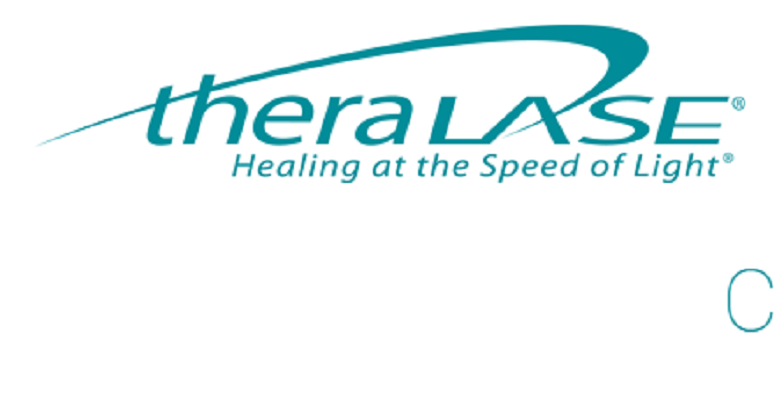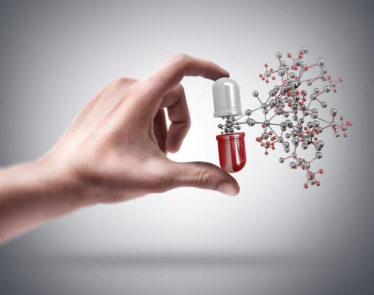
Rutherrin® mediated Photo Dynamic Therapy improves cancer specific immune responses by switching the so called “Don’t eat me” signal that cancer cells use to trick the immune system into the “Eat me” signal on treated human glioblastoma cells, a relevant cell model of Glioblastoma Multiforme.
TORONTO, ON / ACCESSWIRE / November 30, 2018 / Theralase Technologies Inc. (“Theralase®” or the “Company“) (TSXV:TLT) (OTCQB:TLTFF), a clinical stage pharmaceutical company dedicated to the research and development of light activated Photo Dynamic Compounds (“PDCs“) and their associated drug formulations, used to safely and effectively destroy various cancers, announced today that Theralase’s Rutherrin® Photo Dynamic Therapy (“PDT“) has been shown to increase its efficacy in cancer treatments, inducing a cancer specific immune response, by switching the so-called “Don’t eat me” signal to an “Eat me” signal on treated human glioblastoma cells. This switch in cellular signalling improves the uptake of treated cancer cells by immune cells, such as: Antigen Presenting Cells (“APCs“) (i.e.: macrophages and dendritic cells). APCs are a part of the immune system, with a primary responsibility of destroying foreign cells, such as bacteria and viruses, while also destroying dead and dying cells such as cancer cells, if they are able to detect them.
Rutherrin® PDT’s mechanism of action was evaluated in human glioblastoma cell lines, a relevant cell model of Glioblastoma Multiforme (“GBM“), a deadly form of human brain cancer. As previously disclosed in earlier pre-clinical studies, Rutherrin® mediated PDT had a significant increase in survival over untreated controls and also over Aminolevulinic Acid (“ALA“)-PDT treated rats. It was shown that there was a significant increase in the infiltration of cancer specific CD8+ T cells that kill cancer cells.
To further evaluate the mechanism of CD8+ T cells infiltration, Theralase researchers quantified the effect of Rutherrin® PDT on the so-called “Don’t eat me” versus “Eat me” signalling of cells. Expression of the CD47 molecule on cancer cells protects them from destruction by the immune system and is associated with the “Don’t eat me” signal; thus preserving dangerous cells and inhibiting the immune response. On the other hand, expression of extracellular calreticulin (“CRT“) is associated with the “Eat me” signal; thus, improving cancer cell uptake by APCs, potentiating a cancer specific immune response. Therefore, development of therapeutic strategies that enable downregulation of CD47 expression and up-regulation of CRT signalling is desirable to improve clinical outcomes of cancer patients.
Data obtained in human glioma cell line U87 showed that more than 40% of the dying cells in a Rutherrin® PDT treated group show extra cellular expression of CRT (“Eat me” signal), compared to less than 20% of cells in controls (untreated).
image: https://www.accesswire.com/users/newswire/images//TheralaseImg111302018.png

In the same set of experiments, the “Don’t eat me” signals were decreased in Rutherrin® PDT treated cells, showing a 45% decrease in CD47 expression. With an increase in CRT (“Eat me”) signal and a decrease in CD47 (“Don’t eat me”) signal, there is a strong immune response in the destruction of cancer cells versus control.
image: https://www.accesswire.com/users/newswire/images//TheralaseImg211302018.png

Manjunatha Ankathatti Munegowda, Ph.D., DVM, MBA, Research Scientist, Theralase stated, “This discovery supports our previous observations that Rutherrin® PDT induces a strong cancer specific immune response post PDT treatment. These results suggest the treatment with Rutherrin® PDT has strong advantages over other therapies; in addition to the primary acute response in killing cancer cells. Rutherrin® PDT is thus able to induce a cancer specific immune response targeting possible GBM recurrences, post PDT treatment.”
Arkady Mandel M.D., Ph.D., D.Sc., Interim Chief Executive Officer and Chief Scientific Officer, Theralase remarked, “Cancer can often evade the immune system by sending signals that trick the immune system into thinking that the cancer cells are healthy cells and that they should be ignored. One of these tricks involves a cellular signaling pathway that presents a “Don’t eat me” signal to the immune system that tricks the immune system into not engulfing and destroying the cancer cell. We discovered that Rutherrin® PDT overcomes this cellular signalling trick, which will allow APCs to see cancer cells for what they really are and to detect and destroy them. Moreover, the recent experiments have discovered that in addition to suppressing the “Don’t eat me” signal in treated human glioblastoma (brain) cancer cells Tharalase’s anti-cancer PDT technology programs the immune system to seek and destroy cancer cells via upregulation of the “Eat me” signal in PDT treated cancer cells. Using a two-pronged therapeutic approach and targeting both pathways at once could prove very effective in clinical development of Rutherrin® PDT and holds huge potential in the war on brain cancer and on cancer in general.”
About GBM
There are an estimated 24,000 new cases of malignant gliomas diagnosed in the US annually, with more than 14,000 deaths each year. In the majority of cases, patients experience recurrence following initial treatment. This is especially true for GBM, the most common and lethal form of brain cancer. As a result, most patients do not survive beyond two years post diagnosis.
About Theralase Technologies Inc.
Theralase® is a clinical stage pharmaceutical company dedicated to the research and development of light activated Photo Dynamic Compounds and their associated drug formulations intended to safely and effectively destroy various cancers.
Additional information is available at www.theralase.com and www.sedar.com.
This news release contains “forward-looking statements” which reflect the current expectations of management of the Corporation’s future growth, results of operations, performance and business prospects and opportunities. Such statements include, but are not limited to, statements regarding Theralase’s proposed development plans with respect to Photo Dynamic Compounds and their drug formulations. Wherever possible, words such as “may“, “would“, “could“, “should“, “will“, “anticipate“, “believe“, “plan“, “expect“, “intend“, “estimate“, “potential for” and similar expressions have been used to identify these forward-looking statements. These statements reflect management’s current beliefs with respect to future events and are based on information currently available to management. Forward-looking statements involve significant risks, uncertainties and assumptions including with respect to the ability of Theralase to: successfully fund and complete Phase I or Phase II GBM clinical studies, secure the requisite regulatory approvals to commence these GBM clinical studies and implement its development plans. Many factors could cause the Corporation’s actual results, performance or achievements to be materially different from any future results, performance or achievements that may be expressed or implied by such forward-looking statements; including, without limitation, those listed in the filings made by the Corporation with the Canadian securities regulatory authorities (which may be viewed at www.sedar.com). Should one or more of these risks or uncertainties materialize or should assumptions underlying the forward looking statements prove incorrect, actual results, performance or achievements may vary materially from those expressed or implied by the forward-looking statements contained in this news release. These factors should be considered carefully and prospective investors should not place undue reliance on the forward-looking statements. Although the forward-looking statements contained in the press release are based upon what management currently believes to be reasonable assumptions, the Corporation cannot assure prospective investors that actual results, performance or achievements will be consistent with these forward-looking statements. The Corporation disclaims any intention or obligation to revise forward-looking statements whether as a result of new information, future developments or otherwise except as required by law. All forward-looking statements are expressly qualified in their entirety by this cautionary statement.
Neither TSX Venture Exchange nor its Regulation Services Provider (as that term is defined in the policies of the TSX Venture Exchanges) accepts responsibility for the adequacy or accuracy of this release.
For More Information:
1.866.THE.LASE (843-5273)
416.699.LASE (5273)
[email protected]
www.theralase.com
SOURCE: Theralase Technologies Inc.












